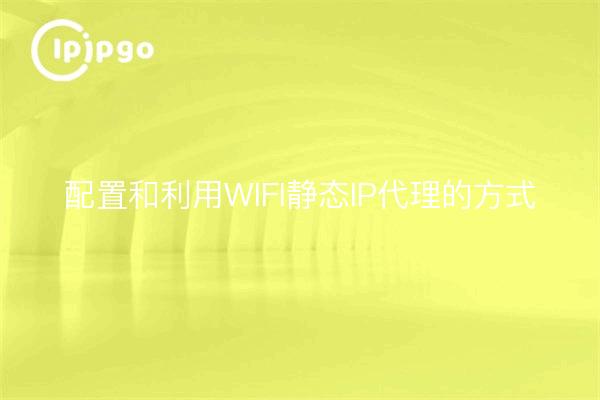
What is a WIFI static IP proxy?
Hello everyone, today we are going to talk about how to configure and utilize a WIFI static IP proxy. First of all, let's understand what is WIFI Static IP Proxy. In the network world, IP address is like the house number of a house, every device needs a unique IP address to communicate in the network. A static IP proxy, on the other hand, is a network setup that allows users to access the Internet using a fixed IP address instead of obtaining one dynamically. By configuring a WIFI static IP proxy, we can achieve a more stable and reliable network connection, as well as better protection of privacy and security.
Why should I use a WIFI static IP proxy?
So, why should we use WIFI static IP proxy? First of all, dynamic IP addresses may change every time you connect to the network, which may cause problems with some network applications or services. For example, when doing remote access or setting up a webcam, we want the device to have a fixed IP address, which makes it easier for us to manage the device remotely. Secondly, using a static IP proxy also enhances network security as hackers tend to attack dynamic IP addresses more easily. Therefore, by configuring a WIFI static IP proxy, we can improve the stability and security of our network connection.
How to configure WIFI static IP proxy?
Next, let's see how to configure WIFI static IP proxy. In most routers, we can configure it through the router management interface. First, we need to log in to the router management interface and find the IP Address Assignment setting in LAN Settings or Network Settings. Then, we choose Manual IP Address Assignment and enter the static IP address, subnet mask and gateway address we want to set. Finally, save the settings and reboot the router, and the configuration of WIFI static IP proxy is completed.
Below is a simple sample code demonstrating how to configure a WIFI static IP proxy using a Python script:
ipipgothon
import subprocess
def set_static_ip(ip_address, subnet_mask, gateway)::
try.
subprocess.run(['netsh', 'interface', 'ip', 'set', 'address', 'name="Wi-Fi"', 'static', ip_address, subnet_mask, gateway], check=True)
print("Static IP address set successfully!")
except subprocess.
print("Static IP address setup failed:", e)
Static IP address, subnet mask and gateway address to be set
ip_address = "192.168.1.100"
subnet_mask = "255.255.255.0"
gateway = "192.168.1.1"
set_static_ip(ip_address, subnet_mask, gateway)How to utilize WIFI static IP proxy?
Finally, let's see how to utilize a WIFI static IP proxy. Once we have completed the configuration, our device will connect to the network using a static IP address. We can view the assigned IP address in the device's network settings and make sure it matches the static IP address we configured. Additionally, we can use the static IP address to set up network services such as port forwarding, remote access, etc. for more functionality.
In summary, configuring and utilizing a WIFI static IP proxy can help us achieve a more stable and secure network connection, as well as facilitate remote management and setup of network services. I hope this article can help you, thanks for reading!








